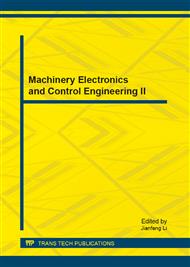p.896
p.903
p.908
p.913
p.918
p.923
p.928
p.932
p.937
Collision-Free Multi-Robot Navigation Using Autonomous Object Selection
Abstract:
For successful SLAM, landmarks for pose estimation should be continuously observed. Firstly, we proposed the object selection algorithm from 2D images and 3D depth maps without human’s supervision. We used the SIFT algorithm to obtain descriptors of point features inside the object, and the surface segmentation algorithm to obtain separated objects from point clouds of 3D depth maps. Automatically selected objects were tested by the threshold function using repeatability, distinctiveness and saliency whether the objects were suitable or not for reusing and sharing between the robots. Secondly, we suggested the closed-form solution to estimate the 3D pose of robots from the information of selected objects. Furthermore, we provided the effective way to accomplish the tasks using multi-robot by compensating the accumulated navigating errors and re-planning the collision-free motion of the robots using the extended collision map algorithm.
Info:
Periodical:
Pages:
918-922
Citation:
Online since:
March 2013
Authors:
Price:
Сopyright:
© 2013 Trans Tech Publications Ltd. All Rights Reserved
Share:
Citation:


